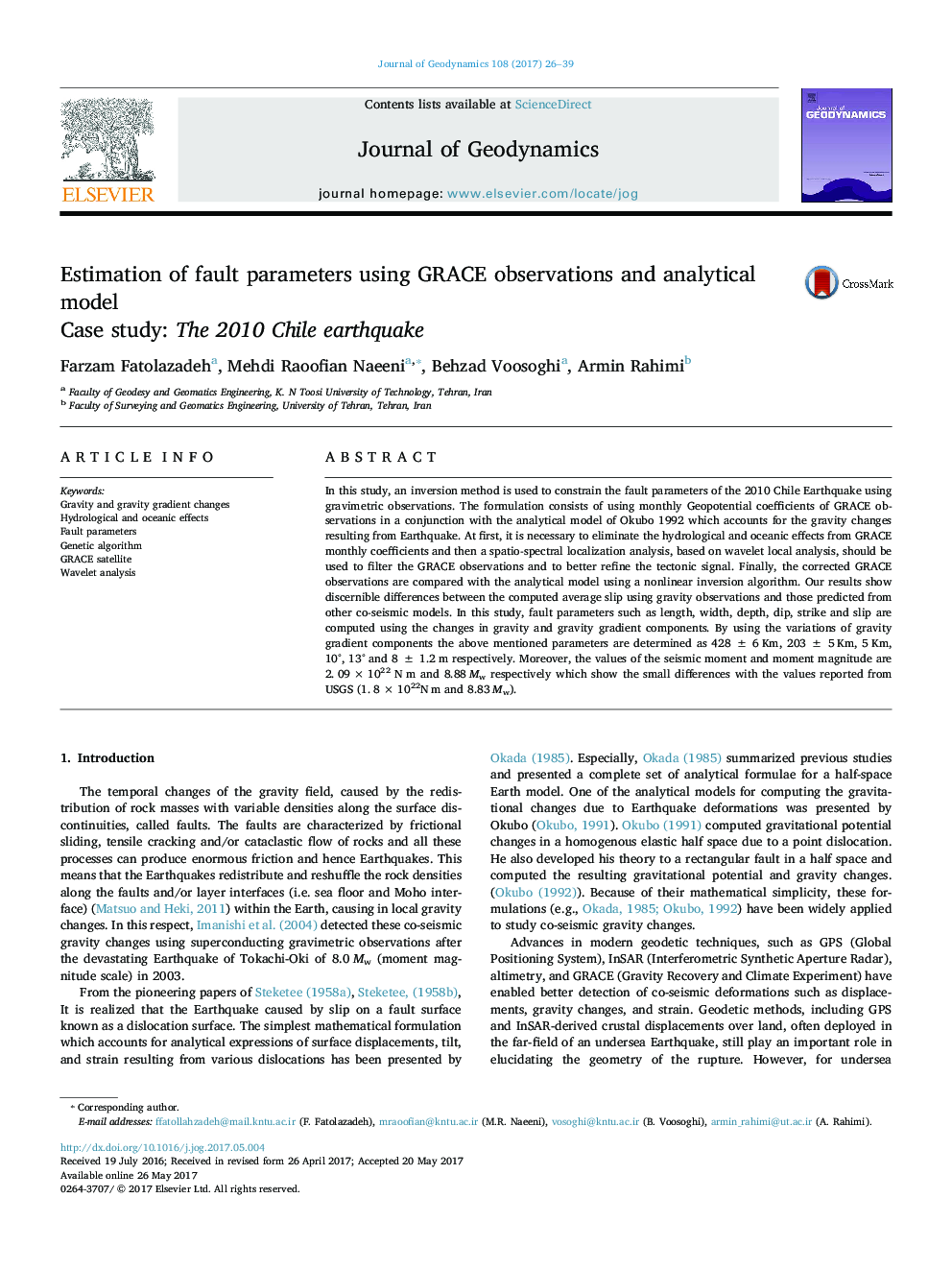| Article ID | Journal | Published Year | Pages | File Type |
|---|---|---|---|---|
| 5781235 | Journal of Geodynamics | 2017 | 14 Pages |
In this study, an inversion method is used to constrain the fault parameters of the 2010 Chile Earthquake using gravimetric observations. The formulation consists of using monthly Geopotential coefficients of GRACE observations in a conjunction with the analytical model of Okubo 1992 which accounts for the gravity changes resulting from Earthquake. At first, it is necessary to eliminate the hydrological and oceanic effects from GRACE monthly coefficients and then a spatio-spectral localization analysis, based on wavelet local analysis, should be used to filter the GRACE observations and to better refine the tectonic signal. Finally, the corrected GRACE observations are compared with the analytical model using a nonlinear inversion algorithm. Our results show discernible differences between the computed average slip using gravity observations and those predicted from other co-seismic models. In this study, fault parameters such as length, width, depth, dip, strike and slip are computed using the changes in gravity and gravity gradient components. By using the variations of gravity gradient components the above mentioned parameters are determined as 428 ± 6 Km, 203 ± 5 Km, 5 Km, 10°, 13° and 8 ± 1.2 m respectively. Moreover, the values of the seismic moment and moment magnitude are 2. 09 Ã 1022 N m and 8.88 Mw respectively which show the small differences with the values reported from USGS (1. 8 Ã 1022N m and 8.83 Mw).
